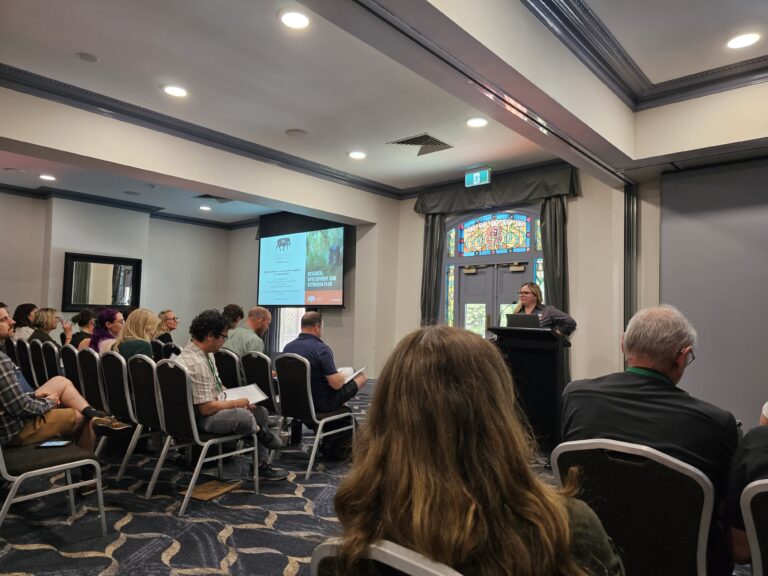The National Feral Pig Action Plan
December 2024 newsletter update
Australian Wildlife Management Society Conference
This conference, addressing the theme ‘Into the Unknown’ was held in Fremantle, WA on 3-5 December 2024. Featured symposia included ‘Desperate measures: new approaches to conservation and control’ and ‘Cause and effect: reducing what we don’t know’. Narelle attended the Conference and presented on the development of the NFPAP’s Research, Development and Extension (RD&E) Plan to guide feral pig RD&E priorities, including the stakeholder engagement process undertaken to inform the Plan.

Feral pigs featured in several sessions, with others providing useful information that could be adapted to enhance feral pig management. These included:
Tom Newsome from the University of Sydney investigated the scavenging behaviours of invasive animals in Australia and key factors driving these activities. A case study was presented on feral pigs in the alpine area of Kosciuszko National Park. Tom highlighted how both juvenile and adult feral pigs are avid scavengers and the incidence of scavenging by feral pigs was higher in cooler seasons. Feral pigs sourced carcasses in the environment faster than wild dogs/dingoes and eagles in the cool season, with the opposite occurring during warmer seasons. This research also demonstrated in areas where feral pigs were scavenging more, dingoes scavenged less.
Stuart Dawson, DPIRD WA, reported key outcomes of a long-term collaring study involving 70 feral pigs in the wheatbelt region of WA to examine their home ranges and the factors that influenced these. Data collected identified that the home ranges of feral pigs decreased with increasing rainfall. It was also found that the effects of body weight influenced the home range of female and male feral pigs differed, with heavier weight females having a smaller home range while heavier weight males had an increased home range. Overall, data obtained from GPS collars provided robust information about the spatial and temporal movements, home range and preferred habitats of feral pigs in this region. Insights gained will now be used to optimise effort by land managers to reduce their populations and impacts as well as motivate land managers to continue to work collaboratively.
Max Khoo from National Parks Board, Singapore discussed the use of wildlife crossing structures by wild boars. Of the 14 mammal species detected using all crossing types, wild boar was the most prevalent species, with over 68% of the detections. They also found that the boar were mainly using culverts during the day time compared to the roads. Whilst critically endangered local species such as Malayan porcupine, Sunda pangolin and Raffles’ banded langur were using these wildlife structures, there is an increased risk of wild boars encroaching on urban areas and facilitating disease transmission and other human- wildlife conflicts. This highlights the importance of monitoring the use of wildlife crossings to understand what might be using them.
Angus Dempsey from Murdoch University and DPIRD WA, presented a poster on the use of artificial fire dam water points by feral pigs in the Warren Bioregion of southwestern Australia. This work highlighted that feral pigs frequent artificial water points and therefore can be ideal sites for feral pig management and monitoring activities.